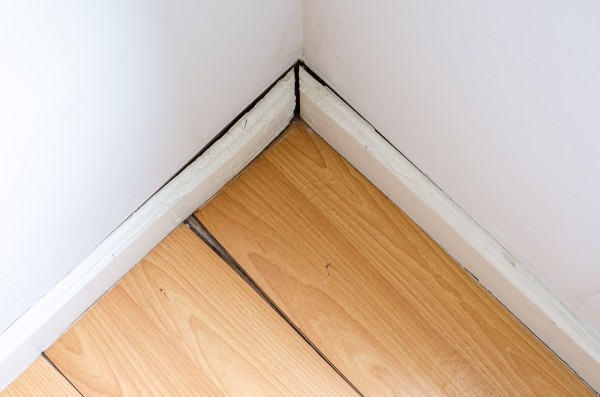If you want to install baseboards, you can confidently do it yourself. A master craftsman's certificate is not required, but a bit of craftsmanship, background knowledge and the right tools. Provided that the premises do not have an unusual cut, then the installation of skirting boards is possible without any problems with careful preparation. In this regard, it is helpful to know the "typical mistakes" in the installation of skirting boards, so that you can then specifically avoid them.
Mistakes in the installation of skirting boards: It's all a question of preparation!
How can mistakes in the installation of skirting boards be avoided? By getting the preparation right! If you just go to the hardware store and get started, you will provoke mishaps and additional costs. Here are three typical mistakes installation skirting:
1. Installation mistake: No plan
It is important to carefully measure the room in advance and thus plan the need for skirting. When planning, allow for a certain amount of off-cut. In this way, you can avoid having to reorder moldings.
2. Installation error: not using the right tools
For precise installation of the moldings on the wall, they must be cut with care. For this, the right tool is essential, because otherwise the baseboards may not have the right angle. It is advisable to use a miter saw, because it allows you to set the exact angle.
3. Installation error: the wrong fastening chosen
Gluing, screwing or fastening clips? Clips are an elegant and practical solution for mounting baseboards. However, there is one caveat here: this type of skirting board mounting is a little more laborious. Therefore, inexperienced hands quickly make mistakes with this form of installation, which then cost valuable time and money. Those who have little manual talent can still install skirting boards on their own - but it is better to use glue.
Recognizing and avoiding mistakes when installing skirting boards
With just a few tips, inexperienced craftsmen can easily identify errors directly during the installation of skirting boards. If they do occur, they can be quickly corrected after or during installation.
1. Problem: Skirting boards fastened with nails come loose
If nails were used in the installation of skirting boards and they come loose again, it is usually because they were all hammered into the masonry at right angles to the wall. It is better to hammer them in at different angles to the wall during installation. This causes a locking effect between the nails, which makes the installation successful without any gaps.
2. Problem: dents after installing baseboards with clips
If you decide to use the "clips" variant, you need a hammering wood to fasten the moldings. Why? If the amateur craftsman were to use a hammer to mount the baseboards, unsightly and visible dents would appear on the surface of the baseboard.
3. Problem: mold on the back of the skirting board
Errors in careless attachment of skirting boards can often only become apparent in retrospect: For example, this includes mold growth on the back of the molding. This often happens due to an accumulation of moisture behind the moldings. To prevent this during installation, the vapor barrier should overlap the floor by at least one centimeter. Behind the skirting it should be pulled up.
4. Problem: Decor or veneer comes off the skirting board
You mounted your new moldings with silicone? That can work, but it can also become an unsightly problem. The silicone can migrate through the molding, causing the decor to come off. In this case, it is better to use solvent-free PU-based adhesive instead of assembly adhesive.
5. Problem: Wall paint keeps coming off at the connection joint
If the paint comes off the wall at the level of the connection joint, this is usually due to the silicone. Paint cannot adhere to this material. For this reason, it is advisable to use acrylic when installing skirting boards for the connection joints.
Which tools should I use to install skirting boards?
Below you will find an overview of the tools that are important when installing baseboards:
- Foxtail or miter saw
- Cutting board
- Assembly glue with strong initial adhesion
- Hot glue gun
- Cartridge gun
- Hammer
- Nails with steel pins
- Drill or cordless screwdriver
- Screws with a minimum length
- Mounting clips
- helpful: corner connectors or corner turrets
- helpful: touch-up paint
Installing skirting boards: The classic beginner's mistakes
A messy and problematic result in the installation of skirting boards, is not always due to a lack of craftsmanship or gross errors in the implementation itself. Often the initial conditions are not right. Thus, mold can form on the moldings later, if the installation of the baseboards on (still) damp walls.
In the case of baseboards made of wood, it is important to leave them in the room for at least 48 hours. It should not be just any room, but the room in which the installation is to take place. Only in this way can the wood adapt to the climatic conditions there, which prevents shrinkage or waxing of the mounted baseboard.

